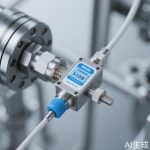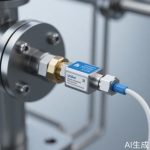In today’s fast-paced technological landscape, the demand for accuracy and reliability has never been higher. At the heart of countless applications—from healthcare to manufacturing—lies a critical component: temperature sensor systems. These systems are not just about measuring heat; they are about ensuring safety, optimizing efficiency, and driving innovation. As industries evolve, the role of temperature sensors has expanded, making them indispensable in our daily lives and industrial processes.
Temperature sensor systems come in various forms, including thermocouples, resistance temperature detectors (RTDs), and infrared sensors. Each type offers unique advantages tailored to specific needs. For instance, thermocouples are prized for their wide temperature range and durability, making them ideal for harsh environments like aerospace and automotive testing. On the other hand, RTDs provide exceptional accuracy for laboratory settings or pharmaceutical manufacturing, where even a minor fluctuation can have significant consequences.
The integration of smart technology has further elevated the capabilities of temperature sensor systems. Modern sensors are often equipped with IoT connectivity, allowing real-time data monitoring and analysis. This means that facilities can predict maintenance needs, prevent equipment failures, and reduce downtime. In agriculture, smart temperature sensors help farmers monitor soil and ambient conditions, ensuring optimal growth environments for crops. In the food industry, they are crucial for maintaining cold chain integrity, safeguarding products from spoilage during storage and transportation.
Beyond industrial applications, temperature sensor systems play a vital role in enhancing everyday life. In healthcare, they are used in medical devices such as incubators for newborns, wearable health monitors, and sterilization equipment. The precision of these systems can be life-saving, providing accurate readings that inform critical decisions. Similarly, in smart homes, temperature sensors contribute to energy efficiency by regulating heating and cooling systems based on occupancy and external conditions, reducing both costs and environmental impact.
Looking ahead, the future of temperature sensor systems is bright, with advancements in materials science and artificial intelligence paving the way for even greater precision and adaptability. Emerging technologies like self-calibrating sensors and nanotechnology-based systems promise to push the boundaries of what is possible. As we continue to innovate, these systems will undoubtedly become more integrated, intelligent, and essential to solving the complex challenges of tomorrow.




Leave a Message